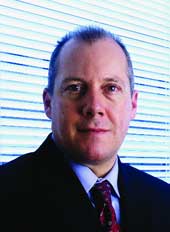Common language

First responders find software well-suited to their interoperable communications needs.
Like many other entities trying to upgrade security after the 2001 terrorist attacks, officials at Dallas Love Field Airport faced a daunting problem: Various agencies used communications equipment that could not let them talk to one another."We faced the same problems that all emergency responders have had throughout the years, and that's the inability of personnel from different agencies and jurisdictions to communicate," said Terry Mitchell, Dallas assistant director of aviation. "They couldn't communicate because they had disparate radio systems on different frequencies."The Dallas Aviation Department manages the general-purpose airport located seven miles northwest of the city's center.Several agencies work at the airport, including the city's police, fire and aviation departments, in addition to the Transportation Security Administration and the Homeland Security Department.In all, nine Dallas-area agencies are participating in a communications interoperability project. Because so many agencies are involved, and the program is still growing, a solution that allowed the various departments to continue using their existing radios, personal digital assistants and other devices was a major requirement.To make that happen, Dallas officials selected a software-based system that creates a central network that incompatible technologies can connect to so they can interoperate.The agencies at Dallas' airport chose Seattle-based CoCo Communications Corp. to build the interoperable network."The technology integration involved bringing in nine disparate radio systems, all of different ages and frequencies, from 20-year-old analog systems to state-of-the-art radio networks, onto a kind of common operating environment," said Peter Erickson, CoCo's vice president of business development.The project got under way in 2005 after DHS awarded Texas a $980,000 grant specifically to solve communications problems. The majority of the project was finished by March 2006, but Love Field officials are continuing to expand it."We also augmented the physical security capabilities at the airport with about two dozen additional security cameras at TSA checkpoints, entrance locations and on the roads leading into and exiting the airport," Erickson said.Dallas Love Field uses a technology called Crypto-graphic Overlay Mesh Protocol. It acts as the glue that binds all the various networks. It ties together radio, telephony, commercial carrier, wireless and IP-based networks.It also includes security measures, Erickson said.Expansion is easy, Erickson said. Officials can use laptop PCs, PDAs and other devices as extensions of the network.By using the system, a Dallas fire official, for example, can log on to the network from a remote location using a laptop and retrieve views from the airport's security cameras and communicate with other agencies via the radio.One of the biggest challenges Dallas officials have faced is figuring out what the business rules should be concerning how the system is used."Even as important as having the capability itself is the development of the safety rules or the business rules as to how it's employed," Mitchell said.To draft those rules all the participating agencies met and walked through various scenarios. They developed procedures that identify, depending on the nature of the emergency, who is in command and who speaks to whom."Having that on paper is one thing, the other thing is to implement it," Mitchell said. "As with any new system if you don't exercise it, nobody is going to use it."So what our challenge is now is finding various ways to use the system, and of course that's going to result in conducting various exercises where all the participating agencies have the opportunity to get familiar with how to call into the system."Incident types result in predetermined interoperability conferences for the responding agencies. The first agency responding to an event can share information with the other agencies.The system also delivers streaming data in the form of messages and alerts that users with data-capable devices can access. Users also can create and upload new messages.Rather than owning the communications system, the Dallas-area agencies pay for it on a subscription basis. CoCo's service model acts like a telecommunications service because the company manages the interoperable communications environment on behalf of the various agencies.CoCo officials expect more agencies to join the network, which will require more careful planning."Just because you have the capability to talk to everybody doesn't mean you should," he said. "And if everybody does, then you're in gridlock and nothing works."Mitchell recommends that government agencies considering adopting a similar system should be prepared to exercise it."Because in an emergency situation, everybody is going to use those things that they are most familiar with," he said. "So you're going to have to employ the system and exercise it sufficiently to where it becomes a very comfortable thing for the emergency responders to participate in."

Mesh Binds the networks
Staff writer Doug Beizer can be reached at dbeizer@1105media.com.

"The technology integration involved bringing in nine disparate radio systems, all of different ages and frequencies." ? Peter Erickson, CoCo Communications Corp.
Mesh Binds the networks
Staff writer Doug Beizer can be reached at dbeizer@1105media.com.
NEXT STORY: Eligibility outsourcing's tough childhood